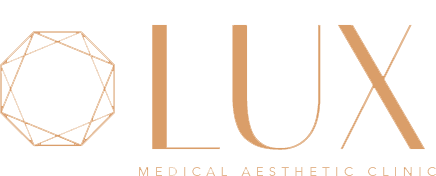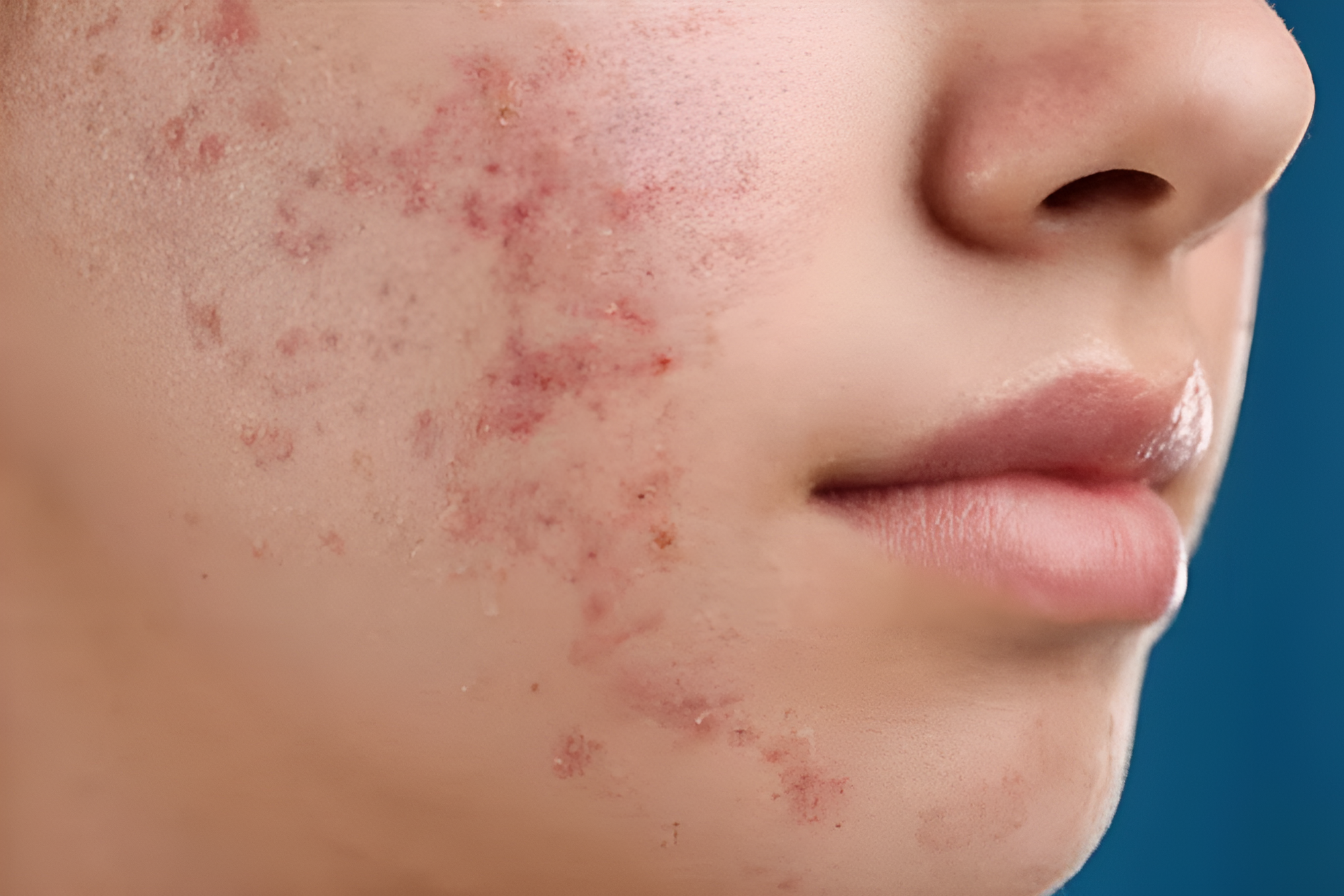Rosacea is a skin condition that exhibits redness, swelling, and visible blood vessels. This skin condition can significantly affect one’s appearance and confidence. Although rosacea is a chronic condition with no cure, there are various methods to effectively manage the symptoms.
This post aims to help you understand the different types, signs, and origins of this condition, as well as guide you through the available treatment options.
Overview of Rosacea
Rosacea primarily affects the facial area and typically manifests in adults. It presents a range of symptoms that often vary from person to person.
The most common signs include persistent redness across the central areas of the face, small red bumps or pustules, and frequent facial flushing. Additional symptoms may include visible blood vessels, a burning or stinging sensation, and thickened skin, with more severe symptoms potentially including eye irritation, rhinophyma, or significant skin disfigurement.
Difference Between Rosacea and Acne Vulgaris
Unlike acne vulgaris, which often presents with blackheads and whiteheads, rosacea lacks comedones. Its prominent and persistent redness further differentiates it from the episodic outbreaks commonly seen in acne vulgaris.
Types of Rosacea
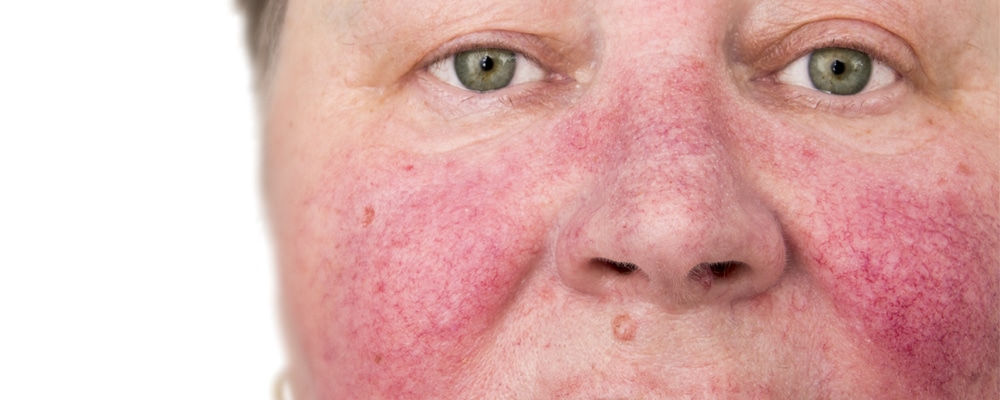
Erythematotelangiectatic Rosacea
Erythematotelangiectatic Rosacea is primarily marked by persistent facial redness and visible broken blood vessels (spider veins) on the face. Individuals affected with this type may experience frequent flushing and blushing lasting several minutes, accompanied by inflamed, sensitive skin prone to a burning or stinging sensation.
Papulopustular Rosacea
Papulopustular rosacea is characterised by persistent redness on the cheeks, nose, chin, and forehead. It includes inflamed papules and pustules, visible small blood vessels, and a burning sensation. It differs from acne due to the lack of blackheads, with redness persisting even when no active breakouts are present.
Phymatous Rosacea
Phymatous rosacea leads to irregular surface nodularities, where the skin becomes thickened, bumpy, and irregular in texture, especially on the nose (rhinophyma). The skin pores become visibly enlarged, reflecting a yellow or waxy appearance.
In severe cases, the thickening of the nose can obstruct breathing.
Ocular Rosacea
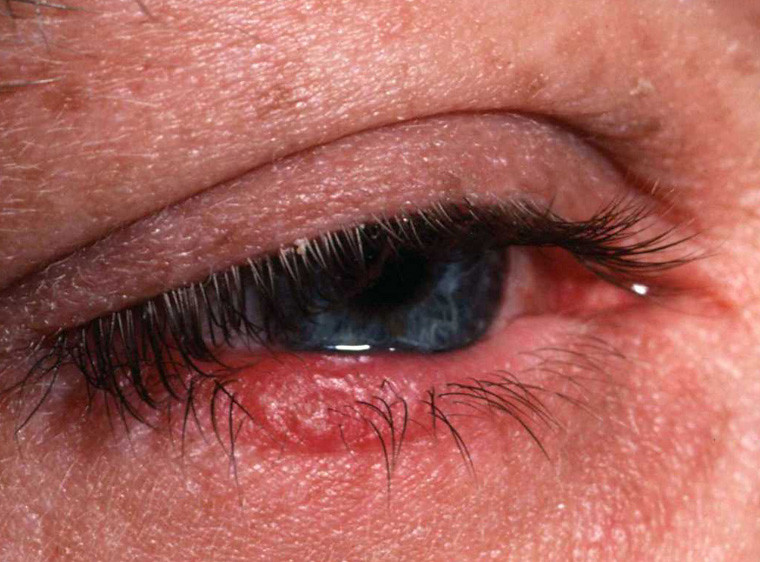
Ocular rosacea impacts the eyes and eyelids, often causing symptoms such as watery or bloodshot eyes, light sensitivity (photophobia), blurred vision, dry eyes, thickened eyelids, and inflamed blood vessels around the eyes. Left untreated, ocular rosacea can lead to more serious complications, including vision impairment and corneal damage. Therefore, it is critical to consult an eye specialist or ophthalmologist at the first sign of ocular symptoms. Early intervention can help prevent long-term damage and ensure proper management of both skin and eye-related symptoms.
Symptoms of Rosacea
The key symptoms of rosacea manifest as chronic redness, frequent flushing, and evident blood vessels, specifically found in the central facial skin or areas like cheeks, nose, chin, and forehead. Another significant indication includes the formation of papules and pustules, characterised by small red nodules and pus-filled bumps and pimples.
In contrast, ocular rosacea impacts the eyes and eyelids, showcasing dryness, irritation, swelling, and a sense of foreign matter in the eyes. Less frequent symptoms may include sensations of burning or stinging and thickened skin, notably near the nasal area.
Symptoms can vary among individuals, making rosacea an especially personalised condition.
Causes and Risk Factors
The exact cause of rosacea is still unclear, though it is believed to result from a combination of genetic and environmental factors. Emerging research suggests that the condition may be linked to abnormalities in the immune system and its interaction with certain skin microorganisms like Demodex mites. Additionally, the gut-skin axis—a connection between gut health and skin conditions—is thought to play a role. Individuals with an imbalanced gut microbiome or gastrointestinal disorders, such as small intestinal bacterial overgrowth (SIBO), may be at higher risk of developing rosacea.
Known triggers for flare-ups include:
- Sun exposure
- Spicy foods
- Alcohol (especially red wine)
- Stress
- Certain medications
- Extreme temperatures
Rosacea typically affects adults between the ages of 30 and 50, with a higher prevalence in individuals with lighter skin tones, those with pre-existing skin conditions (such as eczema), and those with a family history of the condition.
Diagnosis
When diagnosing rosacea, doctors rely on a comprehensive evaluation of symptoms and a visual examination of the skin. This process helps to exclude other skin conditions that may resemble rosacea, such as acne vulgaris, seborrheic dermatitis, and lupus. In some cases, a doctor may recommend a skin biopsy or blood tests to ensure an accurate diagnosis.
If you are experiencing symptoms that suggest rosacea, it is important to seek professional advice. Doctors have the expertise to accurately diagnose the condition and can develop a personalised treatment plan tailored to your needs. Seeking medical guidance early can help manage symptoms effectively.
Treatment Options
While there is no cure for rosacea, appropriate treatment can help manage symptoms and reduce flare-ups.
Topical Medications
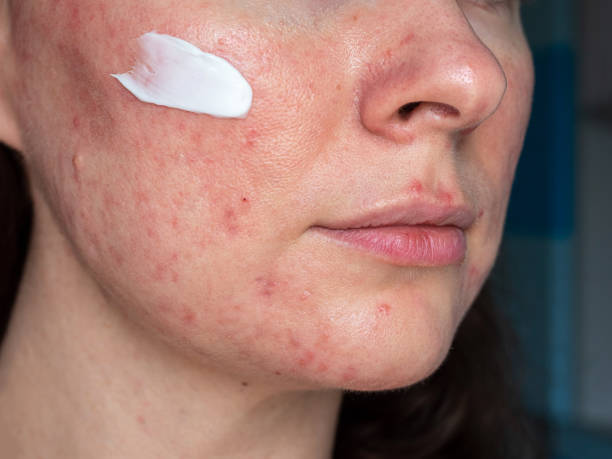
Topical medications are often the first line of defence in managing rosacea symptoms, particularly redness and inflammation. These medications are applied directly to the skin to help reduce inflammation and manage bacterial activity.
Metronidazole, a commonly used topical antibiotic, can help reduce the number and severity of papules and pustules. Some patients also find azelaic acid effective in decreasing inflammation and improving skin texture.
Oral Medications
For more severe cases of rosacea, particularly those involving a large number of papules and pustules, oral medications may be necessary. These medications can help reduce the severity of symptoms and offer relief from some of the more persistent signs of rosacea.
Laser Therapy
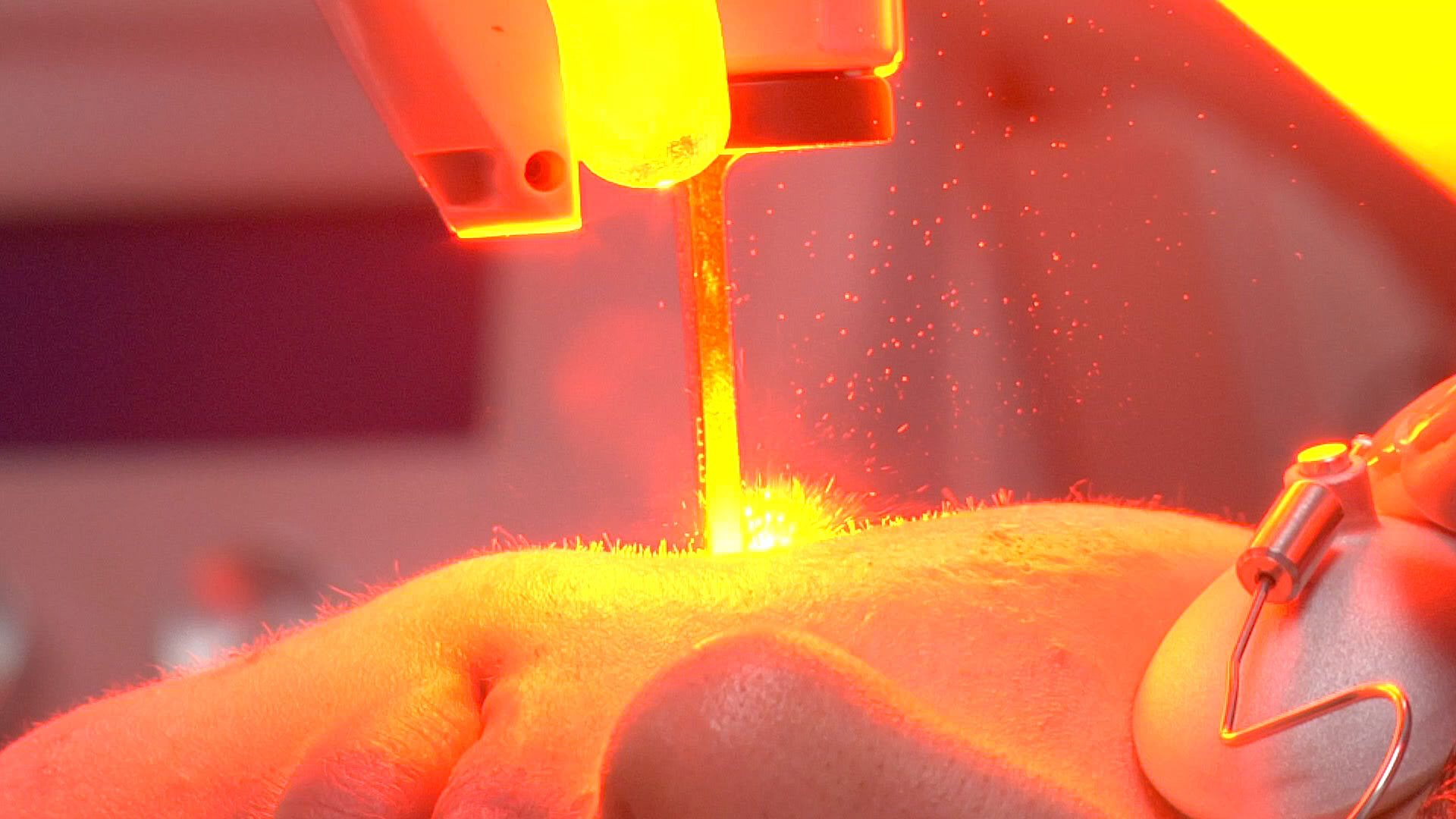
Laser therapy is increasingly utilised for the treatment of persistent redness and visible blood vessels caused by rosacea. This non-invasive treatment can significantly reduce facial redness and improve the overall complexion. However, individual results may vary, and it’s important to consult with a qualified doctor to assess suitability for this treatment.
Diet and Lifestyle for Rosacea
Effectively managing rosacea often involves recognising and avoiding triggers that can worsen symptoms. Common triggers include:
- Spicy Foods: Spicy foods may increase facial flushing and redness in some individuals. Opting for milder flavours and avoiding hot spices can help reduce flare-ups.
- Alcohol: Alcohol, particularly red wine, is a known trigger for rosacea. Reducing or eliminating alcohol can help stabilise the skin condition.
- Temperature Extremes: Exposure to extreme hot or cold temperatures can trigger rosacea symptoms. It’s advisable to dress appropriately and stay indoors during harsh weather conditions to protect the skin.
Aside from avoiding triggers of rosacea, there are certain foods and supplements you can incorporate into the diet to help manage symptoms and improve overall skin health. Some of the these options include:
- Omega-3 Fatty Acids: These are found in fatty fish like salmon, flaxseeds, and walnuts, which can reduce the skin redness and inflammation of rosacea.
- Antioxidant-Rich Foods: Fruits and vegetables with high antioxidant content, such as berries, leafy greens, and bell peppers, can support healthy skin and help combat oxidative stress.
- Probiotics: Probiotics found in yoghurt, kefir, and fermented foods can contribute to a balanced gut for positive skin health.
Potential Complications
If left untreated, rosacea may lead to more severe complications, including:
Rhinophyma
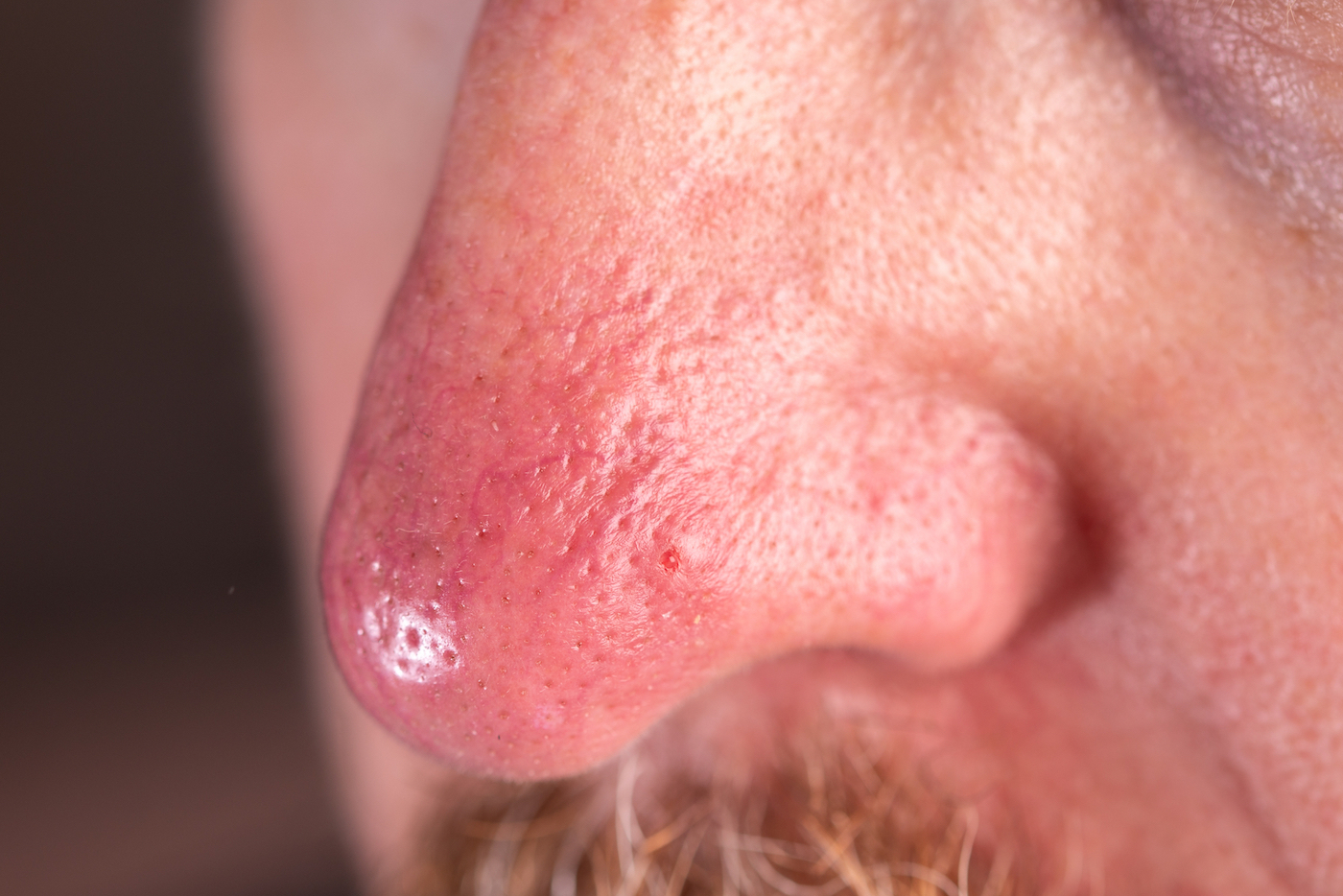
Rhinophyma is a more severe, late-stage symptom of rosacea, characterised by an enlarged, bumpy nose. This condition primarily affects men and is believed to result from chronic inflammation and skin thickening.
Rhinophyma can lead to significant facial disfigurement, making it essential to seek early treatment for rosacea to prevent its progression to this advanced stage.
Permanent Eye Damage
Untreated ocular rosacea may lead to complications that affect eye health. In more severe cases, it could result in vision impairment. Therefore, managing ocular symptoms early is important to avoid potential eye damage.
Reduced Self-Esteem and Social Anxiety
The visible symptoms of rosacea can impact an individual’s self-esteem and social interactions. Many people with rosacea experience increased self-consciousness, which may lead to avoidance of social situations due to concerns about their appearance.
Managing and Preventing Flare-Ups
Although rosacea cannot be cured, it can be managed. Here are some tips to help prevent flare-ups and keep symptoms under control:
Identifying Personal Triggers
Understanding what exacerbates your rosacea is crucial for managing and preventing flare-ups. One effective method is to keep a symptom diary. By documenting daily activities, diet, skincare products used, and environmental conditions alongside any changes in your skin’s appearance, you can identify patterns and pinpoint specific triggers.
This personalised approach allows you to make informed decisions about lifestyle modifications that can help minimise symptoms.
Stress Management Techniques
Stress is a common trigger for many individuals with rosacea. Implementing stress management techniques can contribute to reducing flare-ups.
Practices such as mindfulness and yoga promote relaxation and emotional well-being. Engaging in regular exercise, whether it’s a brisk walk, swimming, or cycling, also helps maintain a balanced mental state.
Protective Measures for Sensitive Skin
Caring for sensitive skin prone to rosacea includes using appropriate skincare products and diligent sun protection. Choose gentle cleansers and moisturisers that are free from harsh chemicals to avoid irritation on the skin.
Also, incorporating broad-spectrum sunscreen into your daily routine helps protect your skin from ultraviolet radiation, a known trigger for many individuals with rosacea. Wearing hats and seeking shade can add extra protection, ensuring your skin remains as calm and clear as possible.
Living with Rosacea
Living with rosacea requires a multi-faceted approach that not only addresses physical symptoms but also acknowledges the emotional and mental challenges associated with the condition. Adhering to a prescribed treatment plan, including taking medications as directed and using recommended skincare products, can help reduce the frequency and severity of flare-ups.
The visible symptoms of rosacea, such as persistent redness and bumps, can have a significant impact on emotional well-being. Many individuals experience feelings of self-consciousness, which may lead to social withdrawal or anxiety. For those affected, seeking psychological support through therapy or counselling can be beneficial. A dermatologist can also recommend professional resources, such as support groups or forums where individuals can share experiences and coping strategies.
It is crucial to acknowledge the impact of rosacea on mental health and seek appropriate support to improve overall well-being and quality of life.
Conclusion
Rosacea is a manageable condition that requires the right approach and commitment. By following a comprehensive treatment plan and maintaining a healthy lifestyle, many individuals can keep their symptoms under control and lead comfortable lives.
Identifying rosacea in its initial stages and seeking immediate medical advice can prevent the progression to more severe complications like rhinophyma and ocular damage. Early intervention allows for tailored treatment strategies that directly address the condition, reducing the risk of long-term disfigurement and vision impairment.
